Henri RIVIERE (1864-1951) Brittany: "The Moonrise (1898)", Original color lithograph from the series "Les aspects de la nature, 1897-1898", signed and numbered (probably for the number in the series of moonrise) handwritten by the artist at the bottom right in the margin. Dimensions: 54.5 x 83 cm. The paper has waves as well as some restorable stains. Actor in the print revival Beginnings as an etcher (1882-1888) Henri Rivière carried out his first attempts at engraving in 188214: he first devoted himself to etching and engraved small Parisian and Breton landscapes. He appreciates the “cooking” of etching and mixes aquatint, soft varnish and drypoint with etching strokes. His first copperplates were printed in between 5 and 15 copies, either by himself or by the printer Auguste Delâtre2. His most famous etching is Burial with Umbrellas (1885), made in echo of the Small Burial engraved by Félix Buhot in 1883. His first experiments were part of the vogue for original etching, in which Félix Bracquemond, Camille Pissarro, Edgar Degas and Félix Buhot also stood out. From 1890, Henri Rivière regularly participated alongside them in exhibitions of the Society of Painters-Engravers2.
Around 1906, he returned to etching, under the leadership of Auguste Delâtre. Color woodcuts in the Japanese spirit (1889-1893): the print as a rare object In 1889, Henri Rivière produced his first wood engravings, where he showed himself to be very influenced by Japanese prints. Henri Rivière's contribution to woodcutting is as much aesthetic as technical: fascinated by Japanese engravings, he seeks to unlock the secrets of color printing. In the absence of assistance and works that could help him in this direction, he studied imported prints and carried out experiments aimed at obtaining similar effects. His research focuses particularly on ink preparation and registration techniques for printing. In his memoirs, he describes his gropings thus: “I was unaware of the inking, printing, and marking skills, and I started looking. I first engraved some line and color plates on pear wood (...) without knowing how I could print them. For three or four months I made numerous attempts and finally arrived at the desired result. It was a bit ridiculous to invent an already existing process in this way (...) I made the colors myself, ground them, glued them; (...) and with a rub of my invention, I printed my plates by hand, twenty copies each »
The wood engravings that he produces require the creation of several matrices, engraved with a penknife and a gouge: a line plate, printed in black, and several plates for the colors (generally around ten)2. He draws his proofs himself by hand, successively printing the different matrices on the paper, the patterns of which must overlap perfectly. To add more character to his prints, Henri Rivière carefully chooses his printing media: he uses old Japanese papers from the liquidation of a paper factory in Tokyo, which he was able to obtain from an importer15. Each print is produced in a few copies, between 5 and 20, which makes them rare objects, reserved for a clientele of enlightened amateurs2. He presented his work at exhibitions of the Society of French Painters-Engravers: in 1892, in particular, his Breton Landscapes were particularly noted3 and praised for the technical prowess they represented2. His practice of color woodcut reached its peak in 1893, when he produced Le Pardon de Sainte-Anne-la-Palud, composed of 5 sheets, the printing of which required fifty woodblocks2 and more than six months of work (four months for the creation of the matrices, and two additional months for the printing)3. The complexity of execution and printing of his color woodcuts led Henri Rivière into an impasse: the creation of his woodcuts, of which he produced few copies, was too long and restrictive, so much so that the artist abandoned wood engraving to turn exclusively to color lithography. He left several projects unfinished, known through unfinished matrices and preparatory gouaches3. “Engraving with a penknife on wood grain the contours of a line board is not attractive, it is a purely manual profession in which the mind hardly intervenes. Colored woods are less difficult being treated with large flat surfaces, and even then, what insipid thousands of gouge strokes must be given to leave only the parts to be printed in relief! »
Main woodcuts Breton Landscapes, 1890-1894: 44 color woodcuts, printed in 10 to 12 woodblocks. The first thirty-three prints were exhibited in 1892 at the Salon of the Society of French Painters-Engravers, Durand-Ruel gallery. The Sea, wave studies, 1890-1892: six plates, on sketches made in Saint-Briac and Douarnenez The work lithographed in colors (1889-1917): the wall and decorative print. Twilight, lithograph, 1898, 54.5 × 83 cm, plate no. 8 from the Aspects of Nature series. From 18943 and his abandonment of wood engraving, he devoted himself exclusively to lithography, which he had already experimented with from 1889. If the number of matrices required remained the same (one per color), their execution is much easier and faster, because the artist no longer has to engrave the plates and simply draws in oily ink on each stone, the printing of which is entrusted to a professional printer. It therefore relieves itself of the tasks which made the execution of woodcuts so restrictive and slow. The change of medium completely modifies his vision and his approach to printmaking. If his aesthetic remains the same, his prints are now printed in several hundred or even thousands of copies: he completely breaks with the spirit of rare object prints that he cultivated through his xylographs, printed in only a few dozen proofs and reserved for enlightened amateurs. The relatively low production costs and the scale of the print runs put Rivière's lithographs within the reach of a wider clientele. In this, Henri Rivière assumes the decorative character of his wall lithographs, intended to adorn homes and schools2.
His most famous series of lithographs is entitled The Thirty-six Views of the Eiffel Tower16, inspired by Hokusai's Thirty-six Views of Mount Fuji. In gestation since 1888, it should have been executed on wood. It is finally executed in lithography. Each print requires the successive printing of five lithographic matrices. The series was completed in 1902 and 500 copies were printed. In 1897-1898, he produced a series of 12 lithographs entitled Les aspects de la nature, printed in 1,000 copies, published by Larousse and intended for a children's audience17. Followed in 1900 by eight lithographs of Parisian Landscapes, in 12 colors18. For the Féérie des Heures19, made up of 18 prints, published in 1901-1902, Rivière was again inspired by Japanese prints and adopted a vertical format close to that of kakemono. This series was published in 2,000 copies2. From 1898, Henri Rivière began producing a series entitled Beau Pays de Bretagne20, enriched each year with a new print until 19172. The immense popularity of Rivière's lithographs owes to their large print run, but also to their variation on various media: calendar, promotional items2... Almost all of Henri Rivière's lithographs were printed by the printer Eugène Verneau, based on rue Folie-Méricourt. The latter's illness, during the 1910s, led to the gradual cessation of Rivière2's lithographic activity. Main series of lithographs Loguivy le soir, lithograph, 1904, 23 × 35 cm, plate no. 7 from the series Le Beau Pays de Bretagne. The Thirty-six views of the Eiffel Tower, 1889-1902: 36 lithographs in five stones, printed in 500 copies Aspects of nature, 1897-1898: 12 lithographs, printed in 1,000 copies Parisian landscapes, 1900: 8 lithographs in 12 colors. Fairies of the Hours, 1901-1902: 18 lithographs printed in 2,000 copies Beautiful Country of Brittany, 1898-1917.
Style and influences Henri Rivière's prints find their origin in the hundreds of watercolor studies he made on the motif. The attention to detail and the meticulous execution of the latter contrast with the formal synthesis of the prints produced by the artist3. Many of these preparatory works are kept at the Bibliothèque nationale de France. Impact of the shadow theater experience on the production of prints The experience of creating shadow theater deeply infuses his printed production. His scenic creations and his prints have in common the attention paid to atmospheric effects, the play of light, the use of rings and flat areas of color. Influence of Japanese prints Henri Rivière's work belongs to the movement of Japonism: his style is very marked by Japanese prints, which he discovered with his friend Georges Auriol, notably with Siegfried Bing. He particularly admires the productions of Katsushika Hokusai and Andô Hiroshige3. The Japanese influence is both technical and formal: Henri Rivière “reinvents” the engraving and printing technique of the Japanese masters. He also borrows certain motifs and compositional principles from Japanese prints, as well as the colored range and the play of transparency allowed by water-based ink3. From the formal language, he finally adopts the simplification of shapes, flat areas of color and the use of outlines. His series of Thirty-six views of the Eiffel Tower is an explicit homage to Hokusaï's Thirty-six views of Mount Fuji: like the Japanese master, Henri Rivière plays with varying points of view around the same common subject (here the Eiffel Tower) and weather effects. The whole series has the common point of showing the Eiffel Tower, either as the main subject of the image, or as a discreet silhouette in the landscape. Hokusai, Ushibori in Hitachi Province Inspired by Hokusai's famous Great Wave at Kanagawa (1829), of which he owns a copy3, Henri Rivière embarked on a series of wave studies. In the same way, The departure of the sardine boats from Tréboul directly borrows the trick of framing cut at Ushibori in the province of Hitachi drawn by Hokusai for the series Views of Mount Fuji3. In the Japanese way, Henri Rivière places a stamp on his prints: the different stamps he used during his career were drawn by Georges Auriol.
Hokusai, Ushibori in Hitachi Province Inspired by Hokusai's famous Great Wave at Kanagawa (1829), of which he owns a copy3, Henri Rivière embarked on a series of wave studies. In the same way, The departure of the sardine boats from Tréboul directly borrows the trick of framing cut at Ushibori in the province of Hitachi drawn by Hokusai for the series Views of Mount Fuji3. In the Japanese way, Henri Rivière places a stamp on his prints: the different stamps he used during his career were drawn by Georges Auriol. Watercolor works After the First World War, he completely turned away from prints and took refuge in watercolors. The technique, which he had practiced since the 1880s, was above all a preparatory medium for his prints: from now on, he only practices watercolor for its own sake. Around a thousand watercolors by him are listed. Collector and art lover Throughout his life, Henri Rivière developed an art collection, particularly Japanese works. He gets his supplies from specialized merchants in Paris: Madame Langweil, Siegfried Bing and Tadamasa Hayashi. With the latter, he had an arrangement: in exchange for the creation of decorative panels for his house in Tokyo, the merchant paid him in imported ancient art objects2. Some of his Japanese prints are today kept at the Bibliothèque nationale de France. Henri Rivière has a large network of knowledge bringing together amateurs, collectors, scholars and heritage curators. He is notably a long-time friend of Edgar Degas2 and of the collector and curator Osvald Sirèn. A good connoisseur, he published a few articles and collaborated on books. From 1913, he directed several editorial projects, for which he took particular care of the iconographic work2:
Aspects of nature, 1897-1898: 12 lithographs, printed in 1,000 copies Style and influences Henri Rivière's prints find their origin in the hundreds of watercolor studies he made on the motif. The attention to detail and the meticulous execution of the latter contrast with the formal synthesis of the prints produced by the artist3. Many of these preparatory works are kept at the Bibliothèque nationale de France. Impact of the shadow theater experience on the production of prints The experience of creating shadow theater deeply infuses his printed production. His scenic creations and his prints have in common the attention paid to atmospheric effects, the play of light, the use of rings and flat areas of color. Influence of Japanese prints
Collector and art lover Throughout his life, Henri Rivière developed an art collection, particularly Japanese works. He gets his supplies from specialized merchants in Paris: Madame Langweil, Siegfried Bing and Tadamasa Hayashi. With the latter, he had an arrangement: in exchange for the creation of decorative panels for his house in Tokyo, the merchant paid him in imported ancient art objects2. Some of his Japanese prints are today kept at the Bibliothèque nationale de France. Henri Rivière has a large network of knowledge bringing together amateurs, collectors, scholars and heritage curators. He is notably a long-time friend of Edgar Degas2 and of the collector and curator Osvald Sirèn. A good connoisseur, he published a few articles and collaborated on books. From 1913, he directed several editorial projects, for which he took particular care of the iconographic work2: Ceramics in Muslim art. Collection of one hundred color plates, Paris, E. Lévy, 1913 Ceramics in Far Eastern art, Paris, Albert Lévy, 1923 two volumes devoted to the recent enrichments of the Louvre museum after 1914, published in 1920 and 1921 Degas' drawings reproduced in facsimile, in collaboration with the publisher Demotte, in 1922-1923 the publication of the Chinese art collector Osvald Sirèn under the title Chinese art documents from the collection of Osvald Sirèn, with the publisher Van Oest in 1925. Works in public collections The National Library of France21 has an important collection of works by Henri Rivière, following a bequest made by the artist, supplemented in 2006 by the donation of his studio funds. Prints by Henri Rivière are also kept in numerous museums, notably the Breton departmental museum (Quimper) and the Baron-Martin museum (Gray). Recent exhibitions His works are regularly exhibited at the Maison de la Chicorée in Orchies. Henri Rivière engraver and lithographer - Henri Rivière photographer (June 20 - September 18, 1988), Musée d'Orsay, Paris Brittany in colors - (end of June - end of September 2003), Breton Departmental Museum, Quimper Henri Rivière, between Impressionism and Japonism (April 7-July 5, 2009), Bibliothèque nationale de France, Paris Henri Rivière (February 12 - May 13, 2012), Museum of Art and History, Saint-Brieuc Hokusai Hiroshige River - Love of nature (June 27 - September 28, 2014), Breton Departmental Museum, Quimper







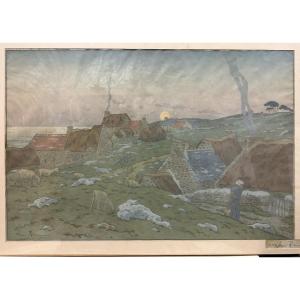





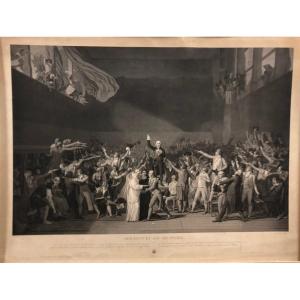
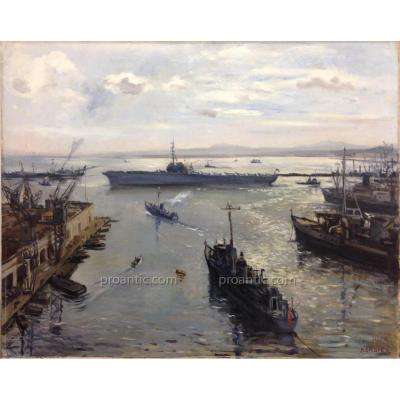
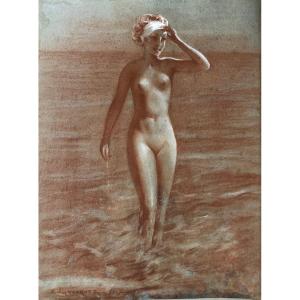




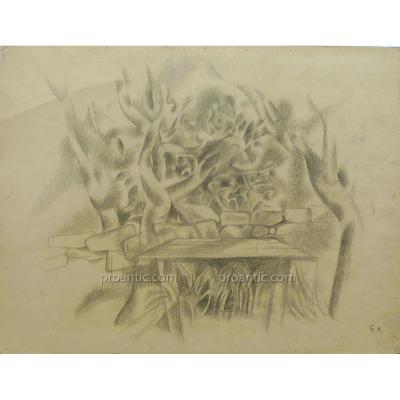

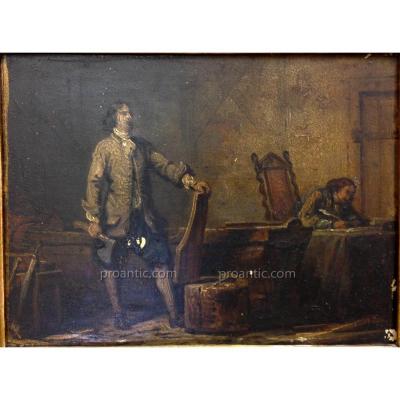
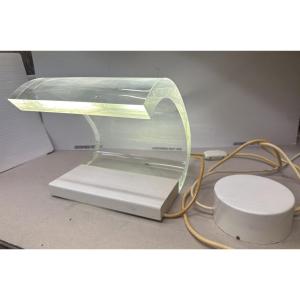




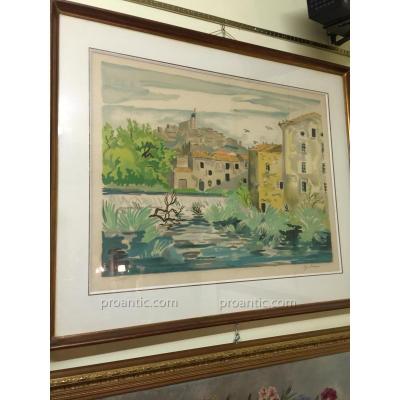







 Le Magazine de PROANTIC
Le Magazine de PROANTIC TRÉSORS Magazine
TRÉSORS Magazine Rivista Artiquariato
Rivista Artiquariato